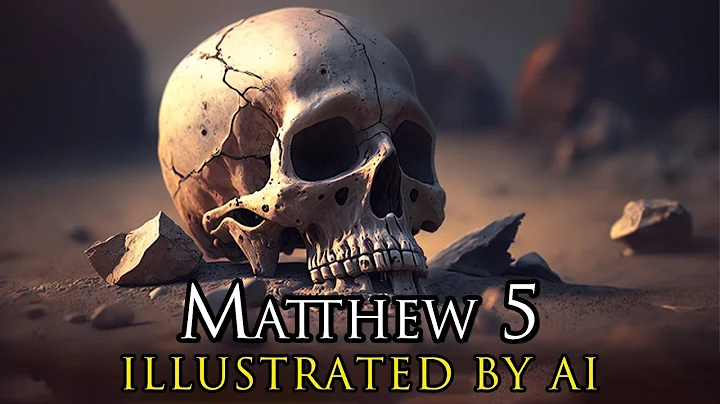Master the Art of Character TURNAROUNDS and Sheets!
Table of Contents:
- Introduction
- The Importance of Turnarounds and Character Sheets
- Key Poses and their Role in Character Sheets
- The Purpose of Turnarounds
- Tips for Creating Turnarounds
- 5.1 Symmetry and Shape Placement
- 5.2 Construction and Posture
- 5.3 Orienting Shapes and Details
- Creating a Front View
- Creating a Side View
- Creating a Back View
- Including Additional Views and Details
- Conclusion
Introduction
When it comes to character development, a single drawing or key pose is often not enough. Whether you're creating characters for personal projects or for others to use, it's important to establish a thorough understanding of the character's appearance and features. One effective way to achieve this is by creating turnarounds or character sheets. In this article, we will explore the process of creating turnarounds and discuss their significance in character design.
The Importance of Turnarounds and Character Sheets
Turnarounds and character sheets play a crucial role in character design. They provide a comprehensive visual representation of the character from different angles, allowing for a detailed exploration of their appearance. By creating turnarounds, you can effectively communicate how a character looks in multiple dimensions and establish rules and limitations for their design, such as stylization, exaggeration, or specific expressions.
Key Poses and their Role in Character Sheets
Key poses are essential elements to include in character sheets, as they provide insight into the character's personality and actions. These poses capture the essence of the character, showcasing them in action and conveying storytelling elements. While turnarounds primarily focus on technical accuracy, key poses bring life and dynamism to the character sheet, making it more engaging and expressive.
The Purpose of Turnarounds
The primary purpose of turnarounds is to present a comprehensive view of the character from multiple angles. Turnarounds are especially beneficial when handing off a character to a modeler or animator, as they provide clear and accurate guidelines for how the character should look in different views. Additionally, turnarounds help establish the aesthetics and design choices of a character, ensuring consistency across various media and adaptations.
Tips for Creating Turnarounds
To create effective turnarounds, consider the following tips:
5.1 Symmetry and Shape Placement
Maintain symmetry across the character's views by using the symmetry tool during the initial stages of the drawing. This will ensure consistency and balance in the character's design. Additionally, pay attention to the placement of the character's main shapes, considering their three-dimensional nature and overall structure.
5.2 Construction and Posture
To achieve accurate side views, understand the basic 3D shapes that make up your character. Begin by creating a 3/4 or front view, and then use this as a foundation to construct the side view. Pay attention to the character's posture, as rigid poses can result in unnatural depictions. Consider the natural curvature of the human body and make the necessary adjustments for your character's anatomy.
5.3 Orienting Shapes and Details
Ensure that the orientation of shapes and details remains consistent across different views. For example, if a collar is angled downward in the front view, it should maintain the same orientation in the side view. Pay attention to the overall rotation and orientation of various features to achieve accuracy and maintain visual coherence.
Creating a Front View
The first step in creating turnarounds is to draw the character from the front. Using the symmetry tool can aid in creating balanced shapes and proportions. As you draw, consider the three-dimensional aspects of the character, thinking about how the shapes contribute to their overall appearance. It is also crucial to capture any primary details, such as props or distinguishing features, during this stage.
Creating a Side View
The side view often presents a challenge for many artists. To overcome this, it is helpful to visualize the character's basic 3D shapes from a 3/4 or front view. This understanding will facilitate the creation of a side view that accurately represents the character's structure. Focus on maintaining horizontal alignment between the front and side views, ensuring that key elements align seamlessly.
Creating a Back View
Once the front and side views are established, creating the back view becomes relatively straightforward. By using the front view as a reference and mirroring the silhouette, you can efficiently complete the back view. Remember to maintain the same orientation and rotation of features to ensure consistency across all angles.
Including Additional Views and Details
To provide a comprehensive character sheet, consider including additional views, such as a 3/4 view. This view aids in fleshing out the character's appearance and provides a more comprehensive understanding of their design. Additionally, include detailed looks at any props the character possesses, various expressions, and unique poses that showcase their movement capabilities. By including these additional elements, you enhance the character sheet's usefulness and versatility.
Conclusion
Creating turnarounds and character sheets is an essential aspect of character design. They allow for a detailed exploration of a character's appearance, enabling clear guidelines for artists, modelers, or animators. While turnarounds provide technical accuracy, key poses and additional details bring life and personality to the character sheet. By following the tips and techniques outlined in this article, you can create effective turnarounds and enhance your character design process.
 WHY YOU SHOULD CHOOSE SaasVideoReviews
WHY YOU SHOULD CHOOSE SaasVideoReviews







